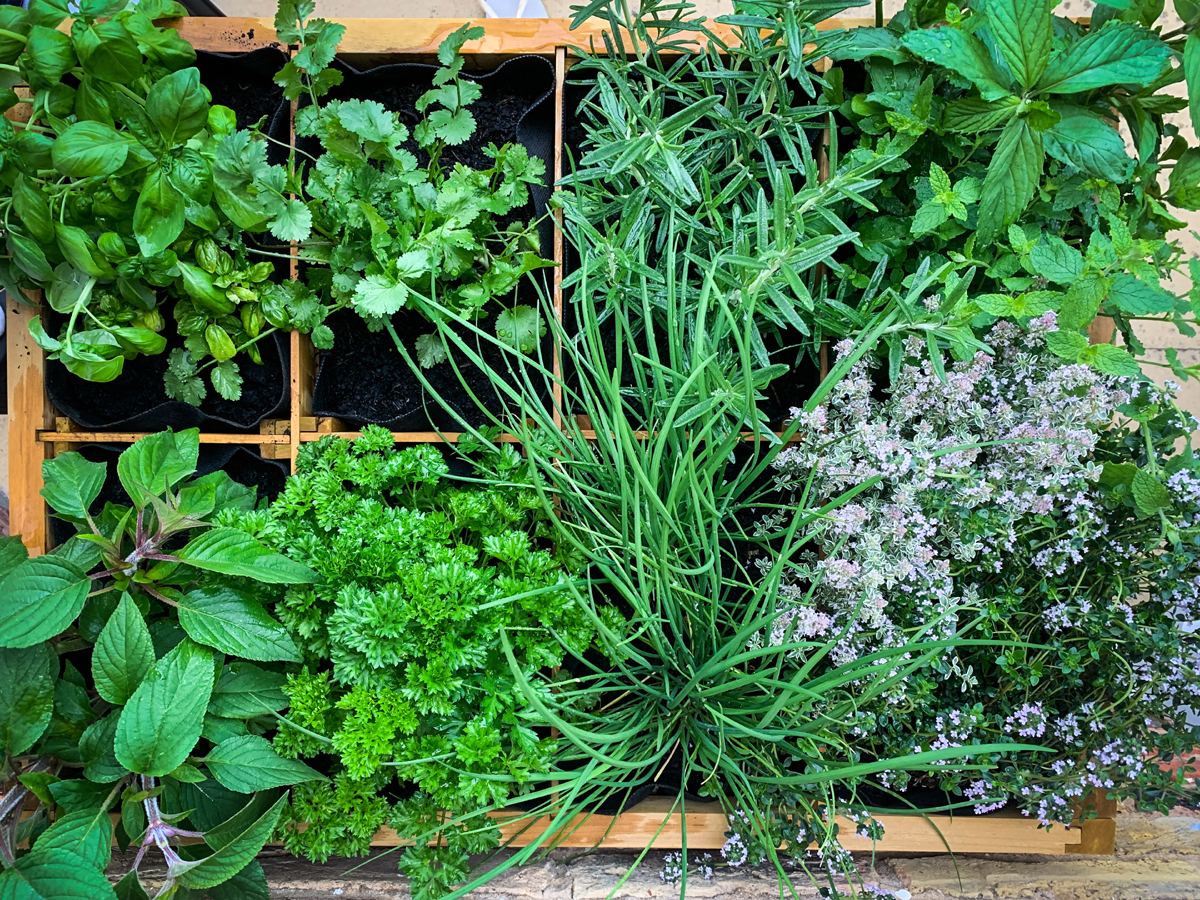Herbs for Your Kitchen Garden

If you have decided you want to create your own kitchen herb garden, you must first decide on what herbs to grow in it. Once you have done that you can start preparing your herb garden plan and start looking at things like herb garden kits or herb seed catalogs. To make things as easy as possible for you I have written this article to teach you about the “Three things every herb gardener needs to know” before going out to buy herb plants or seeds.
How many different types of herbs do you want to plant in your kitchen herb garden? Most people, when they are setting up their herb garden, choose about 5 or 6 types of herbs. But an established small to medium-size herb garden could have as many as 20 to 30 different types of herbs. However, I recommend that you start with just a few, and build up the numbers of herbs as you gain experience.
If you are interested in a specific type of herb (garlic for example), there are lots of resources available to help you research your chosen herb and understand how to cultivate it successfully. But, if you spend too much time on research, you’ll never get your kitchen herb garden established. This article will help you to make your research task easier by teaching you about the different types of herbs that you could choose to grow in your herb garden, and give you some ideas on how they could be used in and around your home.
1. The Main Categories of Herbs
Herbs, like other plants with which you will be familiar can be put into three different categories – annuals, perennials and biennials.
Annuals like basil, cilantro, and summer savory die when the first frosts arrive, and they therefor need to be planted as seeds each year (or as plants if you buy from a nursery).
Sage and winter savory are perennials and can survive colder temperatures. They will return year after year.
Finally there are the biennial herbs. These form their leaves during the first growing season and then flower and seed during the second season. After this they die.
https://pioneerthinking.com/how-to-create-a-diy-planter-box
>> For more herbal gardening content
2. Tips on Growing Herbs in Your Garden
Biennial herbs like angelica and parsley can be sown in the garden in the late spring. Before you sow your seeds you must prepare the soil first by breaking it down until it has a fine texture. Next make it very slightly wet and plant the seeds in shallow rows. Finally sprinkle a thin layer of soil on top and firm it down.
Some herb seeds are difficult to sow because they are very fine. The secret to sowing them evenly is to mix them with very fine dry sand (like children’s play-sand). Sprinkle the sand and seed mixture onto your seed-bed and then cover with soil as described above. Another good tip is to cover your herb seed bed with wet sacking, woven cloth or absorbent paper to keep the soil moist during the period of germination.
3. The Different Uses of Herbs
Herbs are often put into categories which describe how they are most often used. Culinary herbs are probably the most popular for the herb kitchen garden. They can be used in a wide range of different ways in cooking. Herbs like garlic, chives, thyme, sage, basil, majoram and savory have strong flavors. They are used frequently in different types of food, but only in small quantities (but that of course depends upon individual taste preference).
Aromatic herbs are grown for the smell of their flowers or foliage. Aromatic herbs like mint, lovage, and rosemary contain essential oils which can be used in perfumes, scents and toilet waters. Some aromatic herbs like lavender are used as complete plants. They are dried and put into muslin bags and then used around the home to scent linens and clothing. Another popular use of these herbs is to make potpourri, a mixture of dried, fragrant herbs which is used to provide aromatic aromas in houses. You may often come across decorative wooden bowls of potpourri containing lavender, lemon verbena, marjoram and mint. There are lots of combination’s of herbs which can be used to make potpourri. If this is something you would like to try, you’ll have great fun making up the herbal mixtures.
Some herbs are also used for to promote health and aid healing. These are called medicinal herbs. There are lots of stories and examples of how herbs have been used for medicinal purposes, some of them going back to the times of the ancient Egyptians.
Present medical knowledge still recognizes that some herbs are beneficial to health, but many claims made for medicinal herbs are now thought to be over-rated. If you do decide to use herbs from your kitchen herb garden for medicinal purposes you need to exercise caution. Whilst many herbs are completely harmless, others (such as hemlock) can be dangerous if eaten.
Some herbs are grown purely for their beauty; they are called ornamental herbs. These herbs have brightly colored flowers and foliage. Valerian for example, has crimson blossoms and borage and chicory have blue flowers.
However, even though these categories are useful, many of the herbs you can grow in your herb garden have multiple uses. For example, mint can be used to make mint tea or used in cooking. It can even be used in the garden for pest control!
I hope this article has given you some ideas which will stimulate your interest in herbs and enable you to choose those kitchen garden herbs that will be of most use to you.
The Author:
Adam Gilpin








